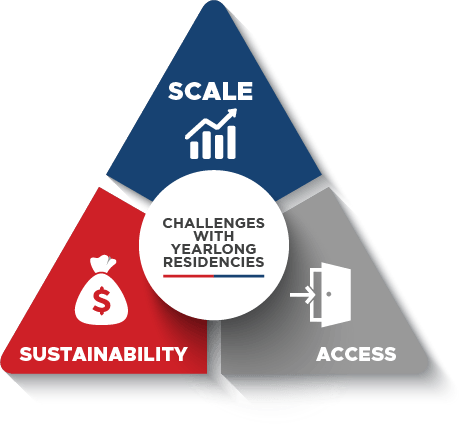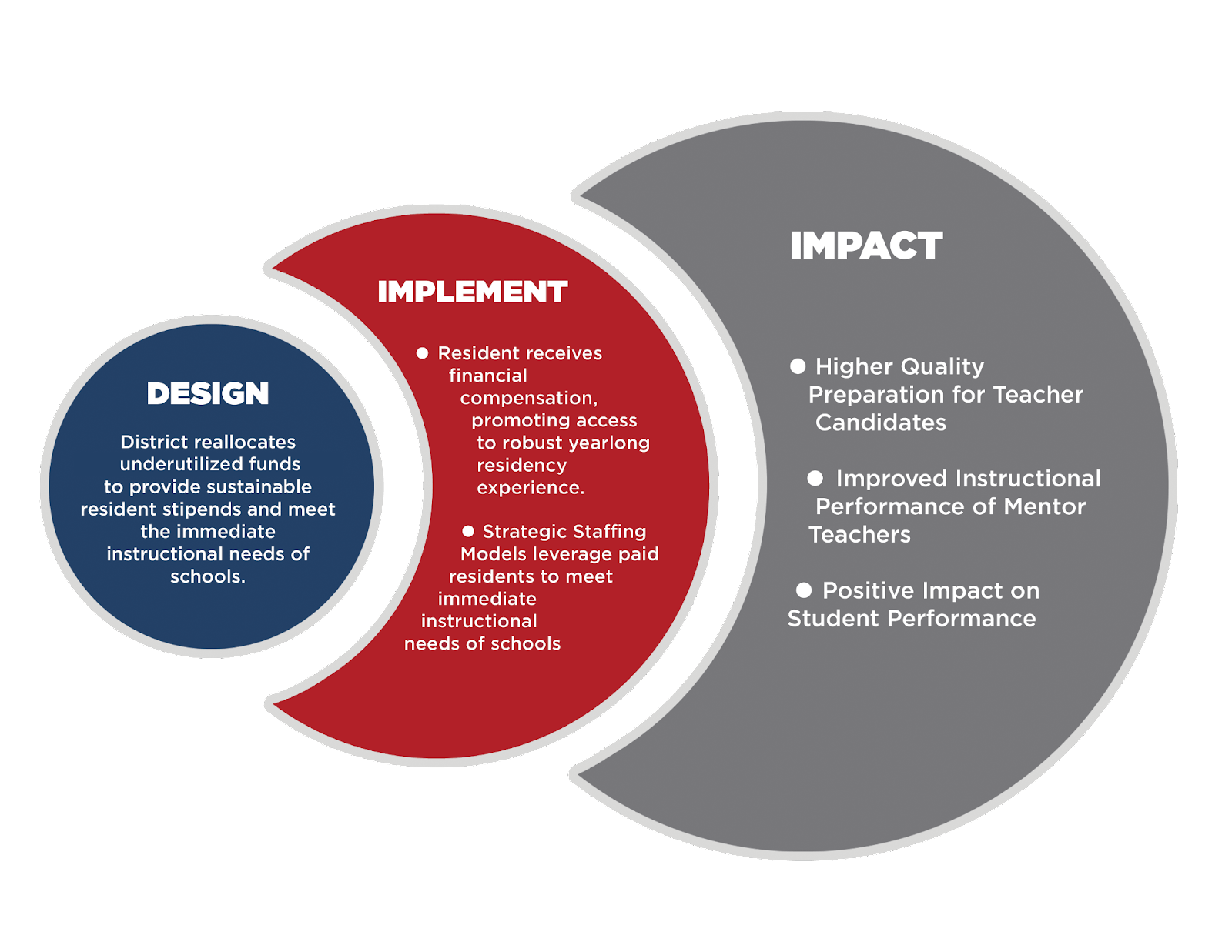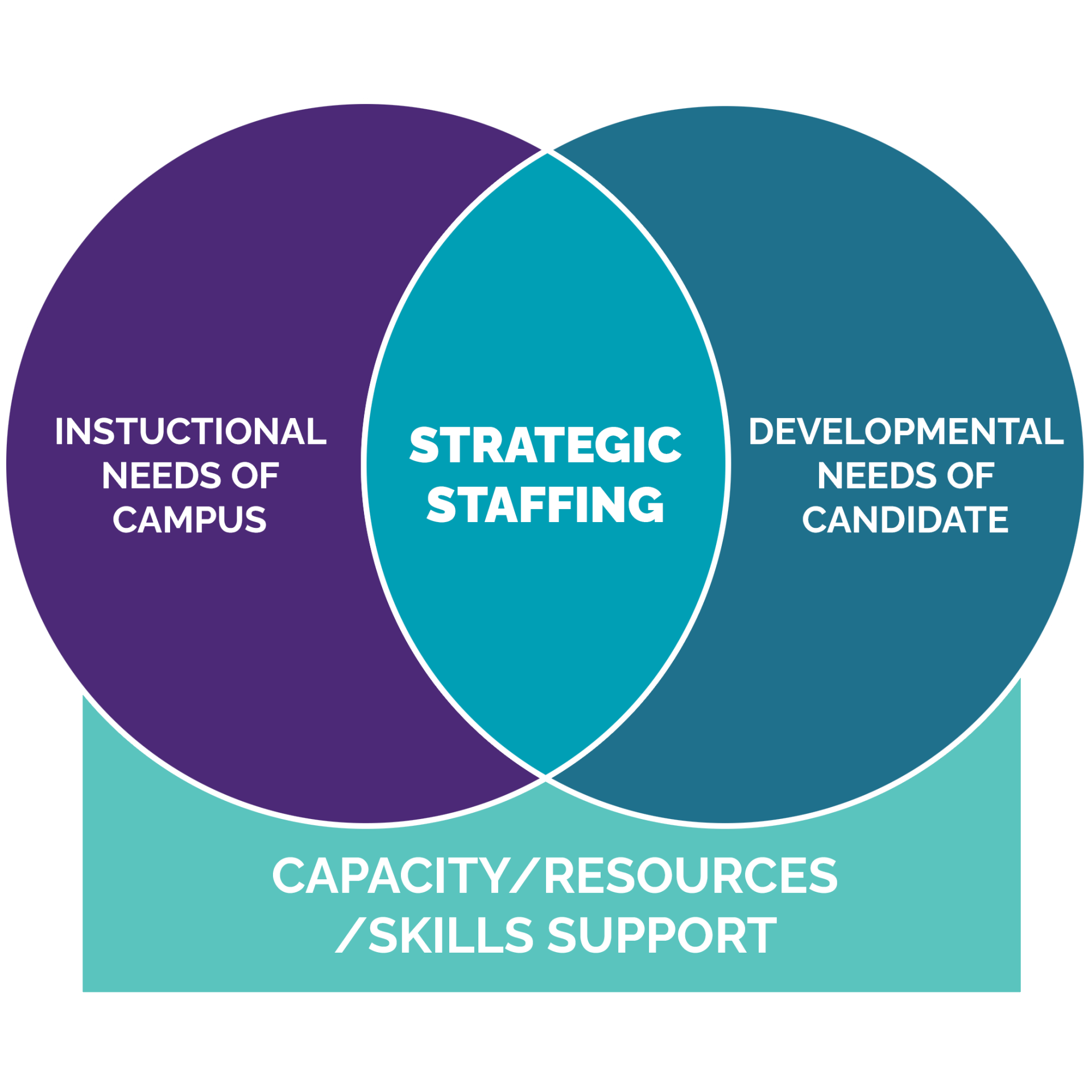Strategic Staffing
Overview
Teacher preparation residencies, where candidates spend a full year student teaching under the guidance of a highly effective mentor teacher, provide extended time for future teachers to learn how to teach before they are responsible for their own classrooms.
Research has found that residency pathways are some of the most effective ways to prepare new teachers who are well-prepared, yet a full-year unpaid clinical experience is not accessible to most candidates. To address this, philanthropic organizations and federal grants have been leveraged to support resident scholarships; however, these financial supports are difficult to sustain and only provide access to a small percentage of resident teacher candidates. Additionally, school districts have a variety of instructional needs that arise throughout the school year. These instructional needs include, but are not limited to, daily substitutes, long term substitutes, paraprofessionals, tutoring, and teacher vacancy needs.
How do we address this divide between quality, cost, and district need?
Educator preparation programs (EPPs) can work closely with their school district partners to design strategies to engage in strategic staffing to fund resident stipends and meet school instructional needs by redesigning school budget models. US PREP provides technical assistance and professional learning to help districts, schools, and EPPs in restructuring school staffing models to include paid teacher resident positions, ensuring the most effective and most retained teachers are prepared and hired in the most economically disadvantaged schools.

"Teacher residencies are emerging as a highly successful model of teacher preparation, developing candidates that are more likely to stay in the classroom longer and have a greater impact on student learning outcomes."
- Clifton Tanabe, Dean,
UTEP College of Education

- Residents will fulfill instructional needs of schools and impact PK-12 students who have been historically underserved.
- Increase access to residency pathways to build and sustain a strong teacher pipeline
- Recruit, prepare, and retain a teacher candidate pipeline that reflects the demographics of the K-12 students.
- Intentionally plan for and scaffold the development of residents to ensure teacher effectiveness.
- Select, develop, and incentivize highly effective mentor teachers.
- Reallocate existing budgets and roles to sustainably fund paid residents and mentors.
Our Approach

Strategic Staffing establishes sustainably sourced, year-long teacher resident stipends. US PREP works closely with Institutions of Higher Education and their District partners to set shared goals for district paid resident placements in mutually beneficial staffing model positions. These goals are developed through a shared governance structure to develop internal capacity to continue the strategic staffing models without the support of US PREP.
More specifically, Strategic Staffing reallocates underutilized district funds to provide sustainable resident stipends. In turn, residents fulfill immediate instructional needs in schools as a part of their year long student teaching experience.
Meeting School District Needs

- Residents as Substitutes: The substitute teaching model relies on residents spending at least one day per week serving as a substitute teacher for other teachers in the school, receiving pay through dollars typically spent on substitute teachers.
- Residents as Long-Term Substitutes: The long-term substitute model relies on two residents splitting the role of a full-time long-term substitute, receiving pay through dollars typically spent on long-term substitute teachers.
- Residents as Paraprofessionals: The paraprofessional model relies on two residents splitting the role of one full-time paraprofessional (teacher assistant), redirecting funding lines that may be left unfilled without a full-time hire.
- Residents as Tutors and Enrichment Teachers: The tutor and enrichment model relies on residents spending at least four days before, during, or after school tutoring students, receiving pay through dollars typically spent on tutoring.
- Residents and Mentor Teacher Teams:
In this model, schools combine two classrooms (about 40-45 students). One highly effective mentor works with three residents to co-teach and support the students in a team based model of instruction. The ratio of teachers to students in this model is about one teacher to ten students.
What is Strategic Staffing?
Strategic staffing reallocates underutilized district funds to provide sustainable resident stipends. In turn, residents fulfill immediate instructional needs in schools as a part of their yearlong student teaching experience.



